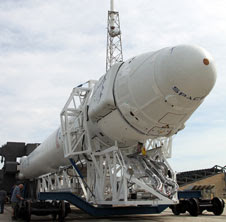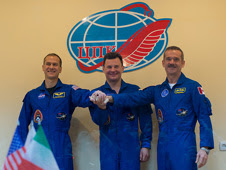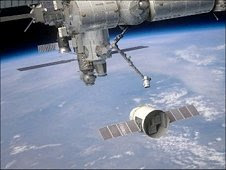Controlling the 57.7-foot Canadarm2 from a robotics workstation inside the station’s cupola, Commander Kevin Ford, with assistance from Flight Engineer Tom Marshburn, grappled the SpaceX Dragon cargo craft at 5:31 a.m. EST as it flew within about 32 feet of the complex. Flight Engineer Chris Hadfield joined Ford and Marshburn in the cupola to assist with the capture and help coordinate the activities. The station was flying 253 statute miles above northern Ukraine at the time of capture.
Upon successful completion of the grapple, Ford congratulated SpaceX and the ground teams supporting the mission and remarked, “As they say, it’s not where you start, but where you finish that counts, and you guys really finished this one on the mark. You’re aboard, and we’ve got lots of science on there to bring aboard and get done."
With Dragon securely in the grasp of Canadarm2, the robotics officer at Mission Control remotely operated the arm to install the capsule to its port on the Earth-facing side of the Harmony module. Once Dragon was in place, Ford monitored the Common Berthing Mechanism operations for first and second stage capture of the cargo ship, assuring that the vehicle was securely attached to the station with a tight seal. Second stage capture was completed at 8:56 a.m.
For more info, visit: http://www.nasa.gov/



































